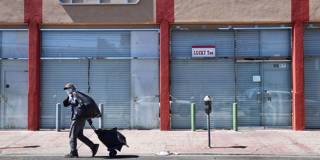Economic growth will eventually return. But its engines will not be the same as before the pandemic. The sooner policymakers recognize this and develop targeted economic-support strategies – which must include a heavy dose of structural reform – the faster, stronger, and more resilient the recovery will be.
BASEL – In the first several months of the COVID-19 crisis – the acute phase – the main economic fallout was a liquidity crunch, which governments countered with aggressive monetary and fiscal stimulus. But now, as the pandemic has dragged on, the crisis is moving to a new phase, marked by significantly higher solvency risks for firms. Policymakers face a dilemma: How can they support needy businesses without propping up those that are not viable?
Initial emergency measures certainly did as much as could have reasonably been hoped, if not more. Firms have remained largely solvent, and jobs and wages have been protected, with fewer corporate bankruptcies in the first half of 2020 than in the previous five years.
As it stands, market indicators suggest that investors expect defaults and insolvencies to remain low. But this might be wishful thinking: Historically, there is a lag between declining GDP growth and rising bankruptcies and unemployment, which tend to peak a year after the initial shock and remain high for another two years.

BASEL – In the first several months of the COVID-19 crisis – the acute phase – the main economic fallout was a liquidity crunch, which governments countered with aggressive monetary and fiscal stimulus. But now, as the pandemic has dragged on, the crisis is moving to a new phase, marked by significantly higher solvency risks for firms. Policymakers face a dilemma: How can they support needy businesses without propping up those that are not viable?
Initial emergency measures certainly did as much as could have reasonably been hoped, if not more. Firms have remained largely solvent, and jobs and wages have been protected, with fewer corporate bankruptcies in the first half of 2020 than in the previous five years.
As it stands, market indicators suggest that investors expect defaults and insolvencies to remain low. But this might be wishful thinking: Historically, there is a lag between declining GDP growth and rising bankruptcies and unemployment, which tend to peak a year after the initial shock and remain high for another two years.